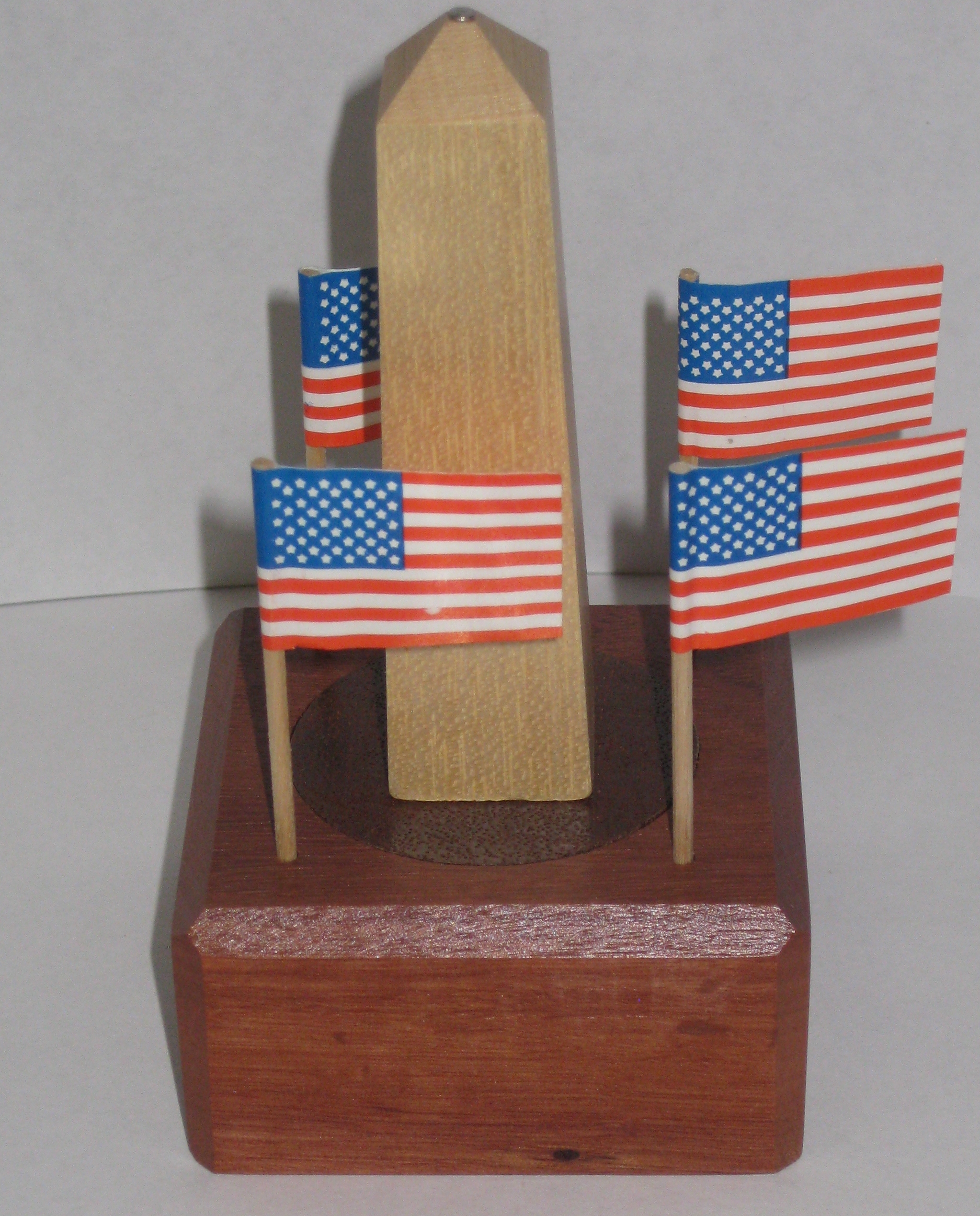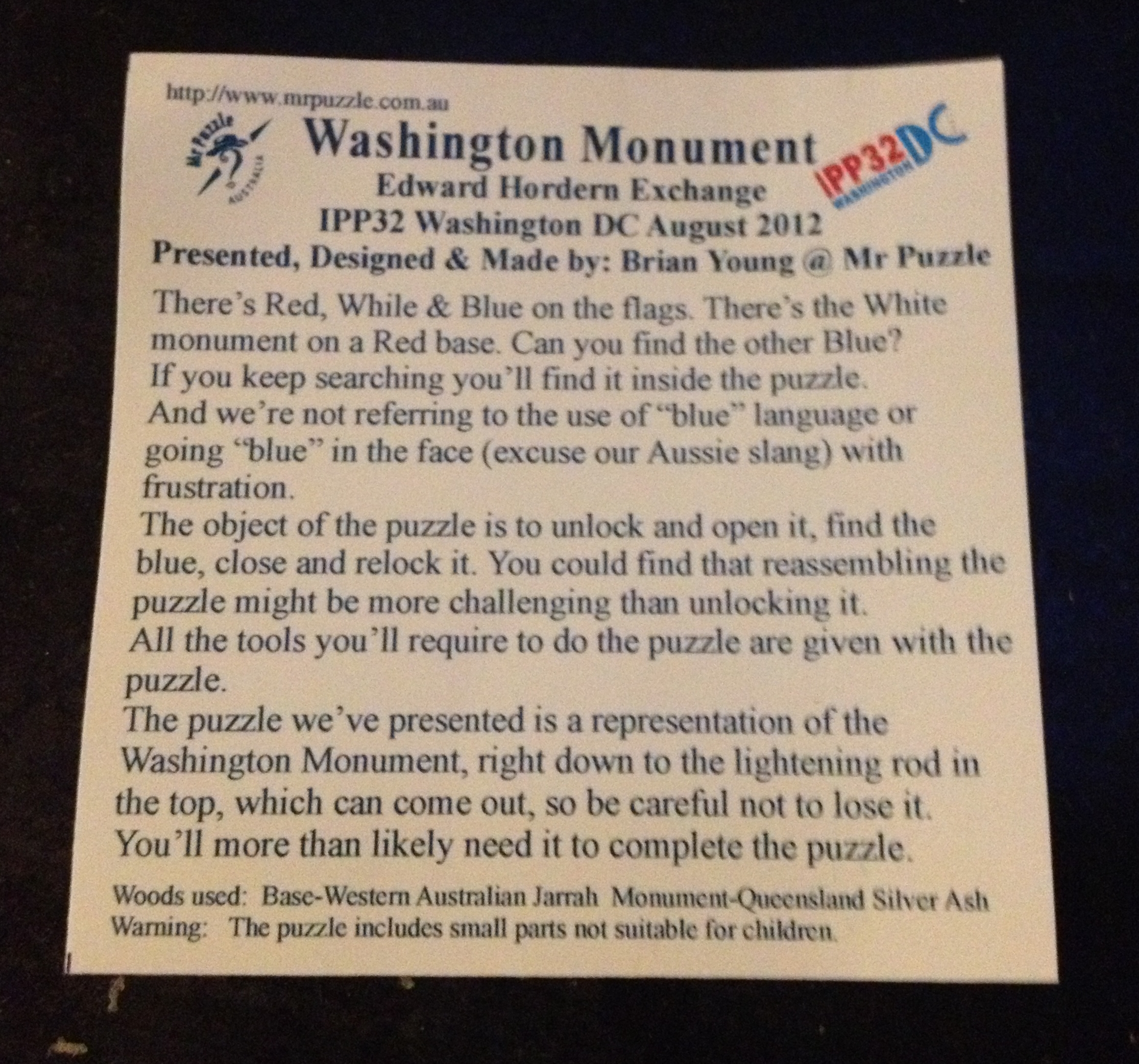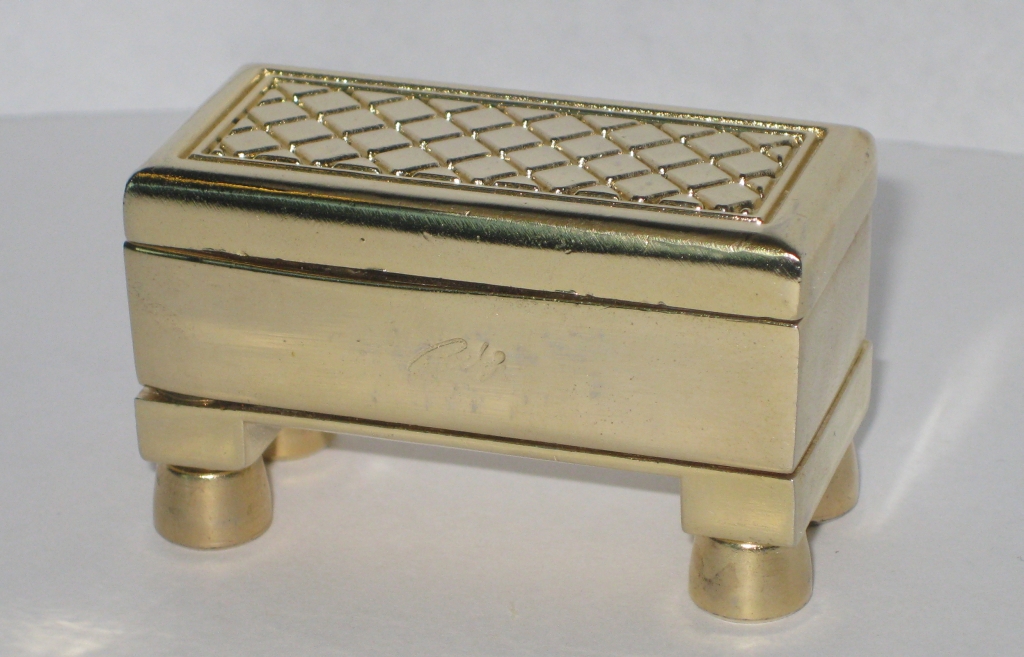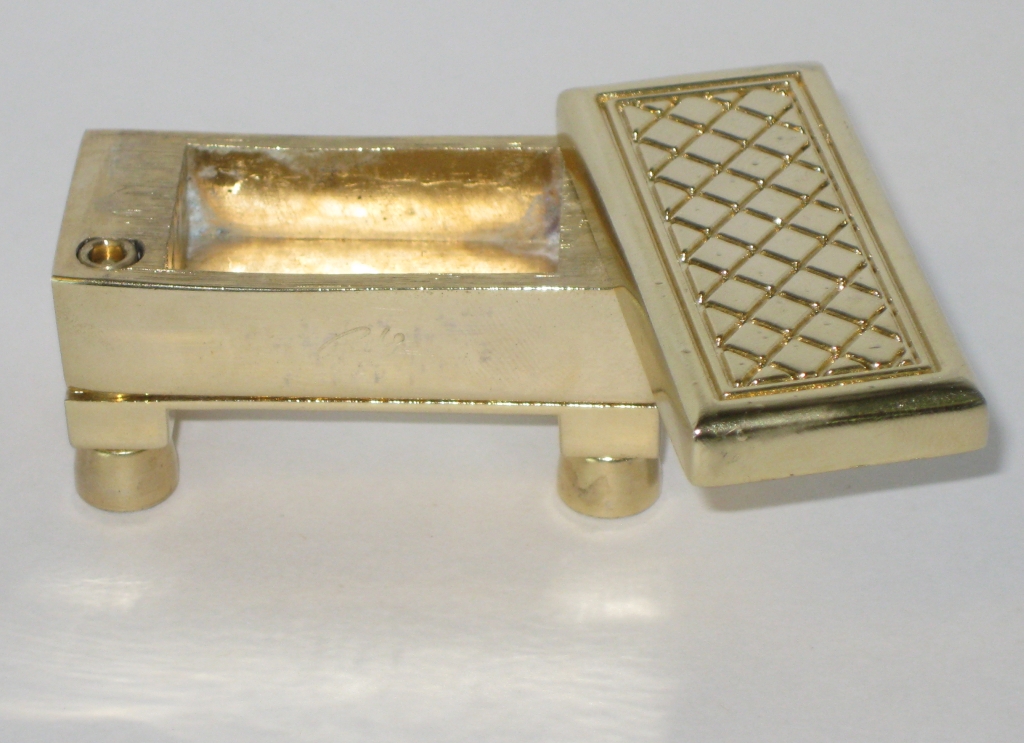One of the puzzles I really liked the look of while taking part in the IPP32 Puzzle Exchange was Mr Puzzle’s Washington Monument. Brian’s description of the puzzle when he presented it, plus the really high quality and great look of the puzzle meant this was one that I went looking for on the day of the Puzzle Party, and was lucky enough to get one (amongst a number of other puzzles from Brian’s table that day!)
It’s a good looking puzzle which sits at 5″ tall and the base is 2.5″ x 2.5″ which makes for a good sized puzzle. The puzzle is a very close replica of the Washington monument, right down to the lightning rod in the top of the tower, and the flags surrounding the base. Made from Queensland Silver Ash for the monument and a Western Australian Jarrah base there’s a good contrast between the woods, and it makes for a striking puzzle. Brian has also used this in the description of the puzzle which reads:
“There’s Red, While & Blue on the flags. There’s the White monument on a Red base. Can you find the other Blue?
If you keep searching you’ll find it inside the puzzle.
And we’re not referring to the use of “blue” language or going “blue” in the face (excuse our Aussie slang) with frustration.
The object of the puzzle is to unlock and open it, find the blue, close and relock it. You’ll have solved the puzzle when you can complete these two stages.
All the tools you’ll require to do the puzzle are given with the puzzle.
The puzzle we’ve presented is a representation of the Washington Monument, right down to the lightening rod in the top, which can come out, so be careful not to lose it. You’ll more than likely need it to complete the puzzle.”
The monument spins freely 360 degrees on its base and you can hear a number of things moving inside the puzzle. Removing the flags, and looking into the drilled holes, you can see some metal pegs as you turn the monument, so it gives you an idea of what’s going on in there, but not how you’d solve it. In order to have solved it correctly, there’s two extra pieces of information that Brian gave you when the puzzle was exchanged (and now appear on his website):
“First stage:
Lock all gravity pins inside the round base of the obelisk so they do not move.
This will allow you to remove the obelisk from the base.
If you open the puzzle by chance then the gravity pins will still move freely; this is not the intended solution. The first stage is not completed until the gravity pins are locked inside the round base.
Second stage:
Unlock the gravity pins so they flow freely again. This allows you to lock the obelisk back in the square base.
You could find that relocking the puzzle might be more challenging than unlocking it was.”
So when I first opened the puzzle, I’d not completed this first stage correctly. The pins were still lose, and I had ‘got lucky’ in terms of opening the puzzle. Being able to see the insides actually didn’t help that much to be able to understand what I should have done, however I’d already figured out that there was something hiding inside the monument that I hadn’t used so far, and clearly that was key. After another 10 minutes or so playing with the puzzle and applying some physics (no I didn’t blow on it or spin it!) I had found out how the puzzle should be solved, and was left with the challenge of locking the puzzle back up again.
The mechanism is very clever and makes for a fun puzzle. I’m not sure how many people will solve it ‘correctly’ first time, but it certainly is a great mechanism, and very well executed. The puzzle received the 3rd Prize for the themed puzzle at IPP32, and it’s deserving of that recognition, both for its iconic look and for being a genuinely good puzzle. I’d recommend getting a copy of this while there are still some available!
I’ll be reviewing the other puzzles I picked up from Brian soon, as well as many more of the IPP puzzles, so keep an eye out for those soon.



